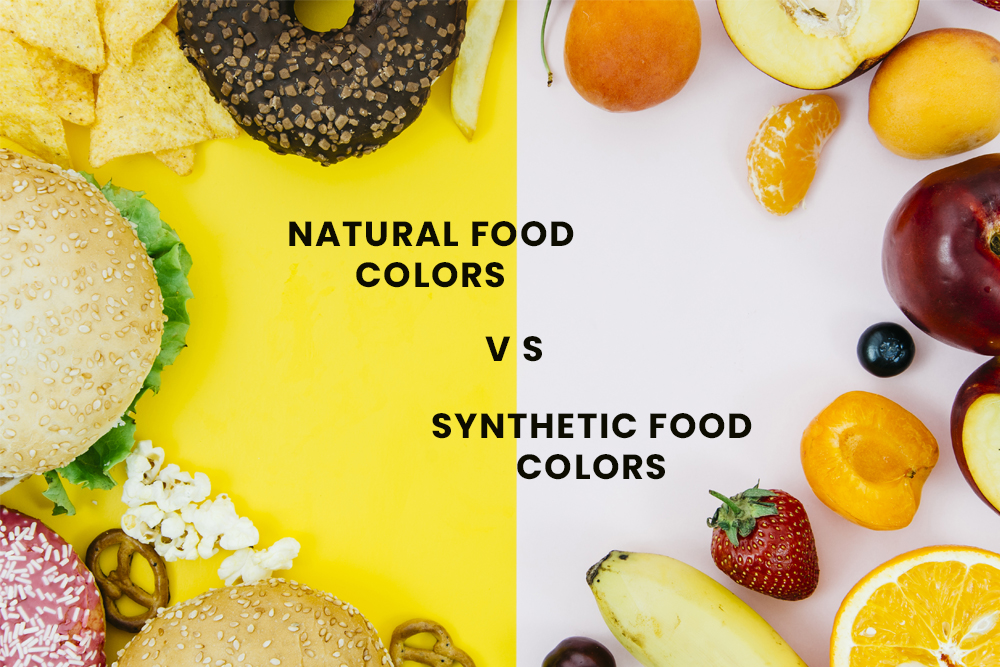The world of food is not just about taste; it’s also about presentation. The vibrant colors of our favorite dishes play a significant role in our dining experience. Food colors, whether natural or synthetic, have become an integral part of the food industry. They enhance the visual appeal of our meals, making them more appetizing and enticing. However, there’s an ongoing debate about which type of food color is better: natural or synthetic. In this comprehensive guide, we will delve into the differences between natural and synthetic food colors and explore their best uses in various culinary applications.
Natural Food Colors:
Natural food colors are derived from sources found in nature, such as fruits, vegetables, spices, and other plant-based ingredients. They have been used for centuries to add color to various foods and beverages. The extraction process typically involves crushing, juicing, or boiling the natural source to obtain pigments, which are then purified and used as food coloring agents. Some common examples of natural food colors include beetroot extract (red), turmeric (yellow), spinach extract (green), and anthocyanins from berries (blue and purple).
Synthetic Food Colors:
Synthetic food colors, on the other hand, are artificially created in laboratories using chemical compounds. These colors are often more vibrant and stable than their natural counterparts, making them a popular choice for the food industry. Synthetic food colors are typically available in liquid, powder, or gel form and can be easily mixed to achieve the desired shade. Some well-known synthetic food colors include Tartrazine (Yellow #5), Red 40, and Blue 1, which are often denoted by numerical codes on ingredient labels.
Differences Between Natural and Synthetic Food Colors:
1. Source:
Natural Food Colors: As the name suggests, natural food colors are sourced from plants, fruits, vegetables, and other natural ingredients. They are minimally processed and are generally considered safe for consumption.
Synthetic Food Colors: Synthetic food colors are chemically synthesized in laboratories. They do not originate from natural sources and are created through a series of chemical reactions.
2. Chemical Composition:
Natural Food Colors: The pigments in natural food colors are composed of naturally occurring compounds, such as chlorophyll, carotenoids, and anthocyanins. These compounds are often rich in antioxidants and can have additional health benefits.
Synthetic Food Colors: Synthetic food colors are composed of artificial chemical compounds, which may include coal-tar derivatives and petroleum-based chemicals. Some of these synthetic colors have raised concerns about potential health risks when consumed in large quantities.
3. Color Variability:
Natural Food Colors: Natural food colors may exhibit variations in color intensity due to factors such as the source, growing conditions, and extraction methods. They tend to produce more muted and earthy tones compared to synthetic colors.
Synthetic Food Colors: Synthetic food colors offer a wider range of vibrant and consistent colors. They can be precisely controlled to achieve specific shades, making them ideal for producing brightly colored foods and beverages.
4. Stability:
Natural Food Colors: Natural food colors are generally less stable than synthetic ones. They may fade or change color when exposed to factors like heat, light, and pH levels, which can limit their use in certain applications.
Synthetic Food Colors: Synthetic food colors are highly stable and less prone to fading or degradation when exposed to environmental factors. This stability makes them suitable for a wide range of food products, including baked goods, candies, and beverages.
5. Labeling and Regulation:
Natural Food Colors: In many countries, natural food colors are often considered more desirable by consumers due to their natural origin. However, there can be variations in labeling regulations, and not all natural food colors are universally accepted as safe.
Synthetic Food Colors: Synthetic food colors are subject to strict regulation and approval processes by food safety authorities, such as the U.S. Food and Drug Administration (FDA) and the European Food Safety Authority (EFSA). They are generally considered safe when used within specified limits.
Which Is Best for Each Usage?
1. Baking and Confectionery:
Synthetic food colors are the preferred choice for baking and confectionery because they offer bright, consistent colors that remain vibrant after baking. They are ideal for decorating cakes, cookies, and candies, as well as for creating colored icings and frostings.
2. Beverages:
Beverages often require stable colors that won’t fade or change when exposed to light and heat. Synthetic food colors are commonly used in soft drinks, sports drinks, and fruit juices to achieve the desired visual appeal.
3. Health and Wellness Products:
When it comes to health and wellness products, such as dietary supplements and herbal remedies, natural food colors are often preferred. Consumers seeking products with minimal artificial additives may find natural colors more appealing.
4. Savory Foods:
Savory foods, such as soups, sauces, and savory snacks, can benefit from the earthy and muted tones of natural food colors. These colors blend well with savory flavor profiles without overpowering them.
5. Natural and Organic Products:
Natural food colors align with the preferences of consumers seeking organic and natural food products. They are often the go-to choice for manufacturers catering to this market segment.
Conclusion:
The choice between natural and synthetic food colors ultimately depends on the specific application and consumer preferences. While synthetic food colors offer vibrant and stable colors for many processed foods and beverages, natural food colors have gained popularity due to their natural origin and potential health benefits. Both types of food colors have their merits and are safe for consumption when used within regulatory limits.
In an increasingly health-conscious world, the demand for natural food colors has been on the rise, challenging the dominance of synthetic counterparts in some segments of the food industry. As food manufacturers and consumers continue to prioritize clean labels and natural ingredients, natural food colors are likely to see increased usage in a variety of products. However, the choice between natural and synthetic food colors should always be guided by the specific requirements of the product and the expectations of the target audience.
